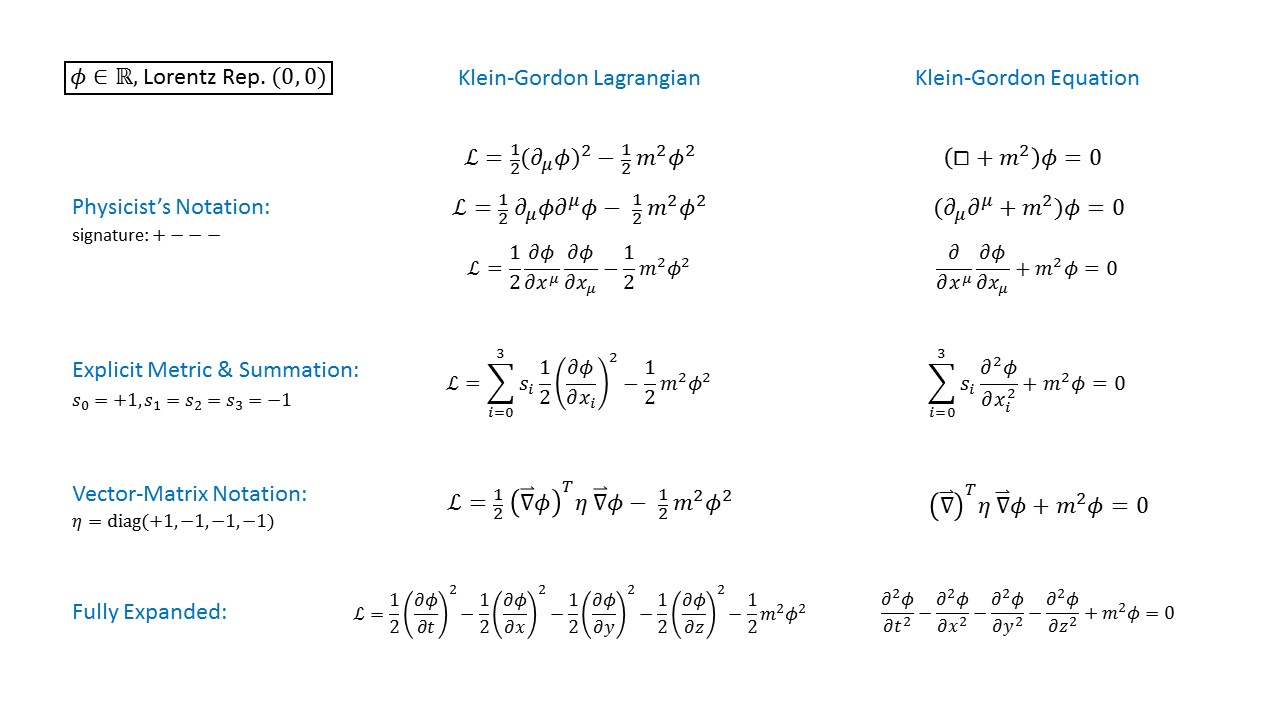Add a new page:
$ ( \partial _{\mu} \partial ^{\mu}+m^2)\Phi = 0 $
The Klein-Gordon equation describes how the state of a relativistic (= fast moving) quantum system without spin changes in time.
The analogous equation for systems with half-integer spin is the Dirac Equation.
If the system only moves slowly, the Klein-Gordon equation becomes the Schrödinger Equation.
The Klein-Gordon equation can be derived from the Lagrangian
\begin{equation} \mathscr{L}= \frac{1}{2}( \partial _{\mu} \Phi \partial ^{\mu} \Phi -m^2 \Phi^2) \end{equation}
using the Euler-Lagrange equations.
Solutions
The most general solution of the Klein-Gordon equation is\begin{equation}\label{KGsol} \Phi(x)= \int \mathrm{d }k^3 \frac{1}{(2\pi)^3 2\omega_k} \left( a(k){\mathrm{e }}^{ -i(k x)} + a^\dagger(k) {\mathrm{e }}^{ i(kx)}\right) .\end{equation}
Graphical Summary
The diagram below shows the Klein-Gordon equation and its Lagrangian in various forms. For a more detailed explanation see Fun with Symmetry.

The Klein-Gordon equation is the correct equation of motion that describes free spin $0$ particles. For a spin-1 generalization see the Duffin-Kemmer-Petiau equation.